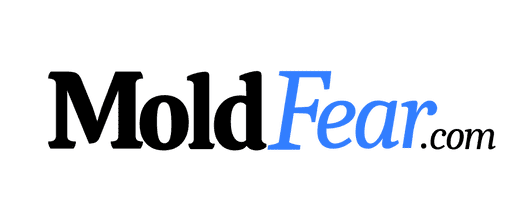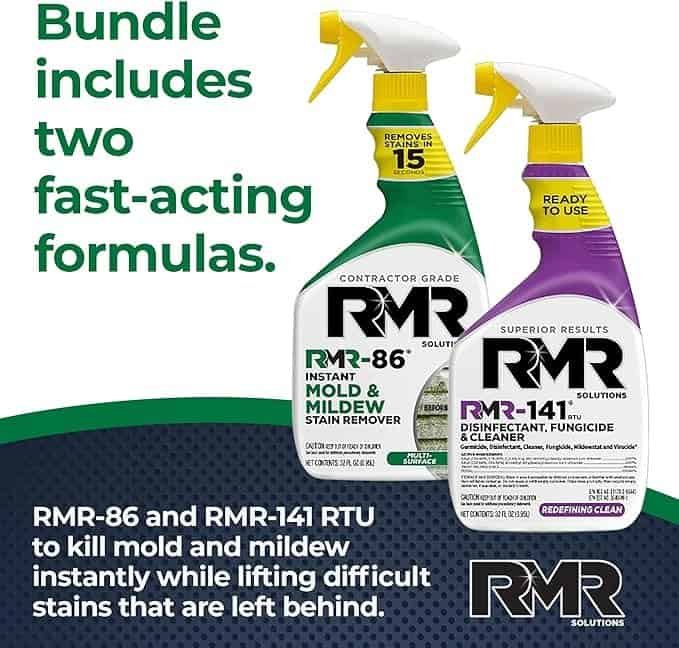Mold can be a serious problem for homeowners, causing damage to property and posing health risks. Detecting mold early is key to preventing it from spreading and causing further damage. There are two main ways to detect mold: DIY testing kits and professional assessments. Both have their pros and cons, and it’s important to understand the differences between the two before deciding which option is right for you.

DIY mold testing kits are readily available and relatively inexpensive, making them an attractive option for budget-conscious homeowners. These kits are designed to be easy to use, with step-by-step instructions for collecting samples and sending them to a lab for analysis. However, the accuracy of DIY kits can vary, and it can be difficult for homeowners to interpret the results and determine what steps to take next.
Key Takeaways
- Detecting mold early is key to preventing it from spreading and causing further damage.
- DIY mold testing kits are relatively inexpensive, but their accuracy can vary.
- Professional mold assessments can be more expensive, but they offer a more accurate and comprehensive analysis of mold problems.
Understanding Mold and Its Risks
Mold is a type of fungus that grows in damp and humid conditions. It can grow on any surface, including wood, paper, carpet, and foods. Mold spores are present everywhere in the environment, and they can enter the home through open doors, windows, and vents.
Types of Mold and Health Concerns
There are many types of mold, and some are more dangerous than others. The most common types of mold found in homes are Cladosporium, Penicillium, Aspergillus, and Alternaria. These molds can cause health problems such as allergies, asthma, and respiratory issues.
Toxic mold, such as Stachybotrys chartarum, can cause more severe health problems, including neurological problems and death in extreme cases. However, toxic mold is relatively rare and is usually found in homes with severe water damage or flooding.
Conditions for Mold Growth and Proliferation
Mold requires moisture to grow and proliferate. Humidity levels above 60% can create ideal conditions for mold growth. Leaks, floods, and high humidity levels can cause mold to grow on walls, ceilings, and floors. Mold can also grow in areas with poor ventilation, such as bathrooms and basements.
It is essential to address mold problems promptly to prevent health risks and structural damage to the home. Homeowners can reduce the risk of mold growth by controlling humidity levels, fixing leaks, and maintaining proper ventilation.
In summary, mold is a common problem in homes, and it can cause health problems such as allergies, asthma, and respiratory issues. Mold requires moisture to grow, and high humidity levels can create ideal conditions for mold growth. Homeowners can reduce the risk of mold growth by controlling humidity levels, fixing leaks, and maintaining proper ventilation.
DIY Mold Testing Kits
Mold growth can cause serious health problems, and it is important to detect and remove it as soon as possible. DIY mold testing kits can be an affordable and convenient way to detect mold in your home. These kits are widely available and can be purchased at most home improvement stores or online.
Types and Usage of Mold Test Kits
DIY mold test kits come in different types, such as tape strips and petri dishes. Tape strips are used to collect mold samples from surfaces, while petri dishes are used to collect air samples. The collected samples are then sent to a lab for analysis. Some DIY mold test kits also offer on-site analysis, providing immediate results.
Home mold testing kits are easy to use and do not require any special equipment or training. The instructions are simple and straightforward, and most kits come with all the necessary components. The user collects the sample, sends it to the lab, and waits for the results.
Advantages and Limitations of DIY Testing
DIY mold testing kits offer several advantages. They are affordable, convenient, and can provide quick results. They can also be used to monitor mold growth over time, helping to prevent future outbreaks.
However, DIY testing has its limitations. The accuracy of the results can vary, and false negatives are common. In addition, the results may not be as comprehensive as those obtained from professional assessments. If mold is detected, it is important to contact a professional for a thorough assessment and removal.
Overall, DIY mold testing kits can be a useful tool for detecting mold in your home. However, it is important to keep in mind their limitations and to seek professional help if mold is detected.
Professional Mold Inspection
When it comes to mold detection, professional mold inspection is the most reliable and accurate method. A professional mold inspector has the expertise to identify mold growth, determine the type of mold, and assess the extent of the infestation.
When to Hire a Mold Inspector
One should hire a mold inspector when they suspect mold growth in their home or business. Mold growth can be a result of water damage, high humidity levels, or poor ventilation. A musty odor or visible mold growth are signs that mold may be present. A professional mold inspector can conduct a visual assessment, take air and surface samples, and perform lab testing to determine the presence of mold and its type.
What to Expect from a Professional Assessment
A professional mold inspection includes a detailed report of the findings. The report should include the type of mold, its location, and the extent of the infestation. The inspector should also provide recommendations for remediation and prevention of future mold growth.
Professional inspections are more expensive than DIY mold tests, but they provide accurate and reliable results. A professional mold test is conducted by a certified microbial investigator (CMI) who has the expertise and experience to identify mold growth and assess the extent of the infestation.
In summary, professional mold inspection is the most reliable and accurate method for detecting mold growth. It provides a detailed report of the findings and recommendations for remediation and prevention of future mold growth.
Comparing Costs and Value

DIY Mold Test Kits vs. Professional Inspection Costs
When it comes to detecting mold in your home, there are two main options: DIY mold test kits and professional inspections. DIY mold test kits are relatively inexpensive, with prices ranging from $10 to $50, while professional inspections can cost hundreds or even thousands of dollars. However, it’s important to note that the cost of a professional inspection includes a thorough assessment of your home, which can identify hidden mold and potential sources of moisture that DIY kits may miss.
DIY mold test kits typically include a swab or tape lift to collect a sample of mold from a surface in your home. You then send the sample to a lab for analysis, which can cost anywhere from $30 to $150. While DIY kits may be cost-effective in the short-term, they may not provide a complete picture of the mold in your home and can lead to additional expenses down the line if mold is left undetected.
On the other hand, professional inspections typically include a visual assessment of your home, moisture readings, air samples, and lab analysis. While the upfront cost may be higher, a professional assessment can provide a more comprehensive understanding of the mold in your home and potential sources of moisture. This can save you money in the long run by identifying and addressing mold issues before they become more serious and expensive to remediate.
Analyzing Long-Term Benefits and Savings
While the cost of a professional inspection may be higher, it’s important to consider the long-term benefits and potential savings. A professional inspection can identify hidden mold and potential sources of moisture, which can prevent future mold growth and save you money on remediation costs. Additionally, a professional assessment can provide documentation of the mold in your home, which can be useful for insurance claims or when selling your home.
DIY mold test kits may be a good option for those on a tight budget, but it’s important to weigh the potential costs and benefits. If you suspect mold in your home or have a history of moisture issues, a professional assessment may be the more cost-effective option in the long run.
Mold Remediation Strategies

When it comes to mold remediation, there are two main options: DIY techniques or hiring a professional mold removal company. Both options have their pros and cons, and the choice depends on the extent of the mold problem and the homeowner’s level of expertise.
DIY Remediation Techniques
DIY mold remediation techniques can be effective for small, isolated areas of mold growth. Some popular DIY techniques include:
- Scrubbing moldy surfaces with detergent and water
- Applying a solution of bleach and water to moldy areas
- Using natural cleaners like vinegar or tea tree oil
However, it’s important to note that DIY techniques are not always effective, and they can even be dangerous if proper precautions are not taken. Homeowners should always wear protective gear such as gloves and masks when dealing with mold. Additionally, DIY techniques may not address the underlying moisture issues that caused the mold growth in the first place.
Choosing a Professional Mold Removal Company
For larger or more severe mold problems, it’s best to hire a professional mold removal company. These companies have the expertise and equipment necessary to safely and effectively remove mold and prevent its return. When choosing a professional mold removal company, homeowners should consider the following:
- The company’s level of experience and expertise
- Their certifications and licenses
- The types of services they offer
- Their pricing and guarantees
Professional mold removal companies can also help homeowners with moisture control strategies to prevent future mold growth. These strategies may include fixing leaks, improving ventilation, and installing dehumidifiers.
Overall, the best mold remediation strategy depends on the extent of the mold problem and the homeowner’s level of expertise. While DIY techniques can be effective for small areas of mold growth, larger or more severe mold problems require the expertise of a professional mold removal company. Regardless of the chosen strategy, it’s important to take proper precautions and ensure that the home is mold-free and protected from future growth.
Preventing Future Mold Problems

Preventing future mold problems requires a combination of effective moisture and humidity management, regular monitoring, and maintenance. Here are some precautions that homeowners can take to prevent mold growth:
Effective Moisture and Humidity Management
The key to preventing mold growth is to control moisture and humidity levels. Homeowners should ensure that their homes are well-ventilated and that humidity levels are kept between 30 and 50 percent. This can be achieved by using dehumidifiers, air conditioners, and fans. It is also important to fix any leaks or water damage as soon as possible to prevent moisture buildup.
Regular Monitoring and Maintenance
Regular monitoring and maintenance can help identify mold problems before they become serious. Homeowners should inspect their homes for signs of mold growth, such as musty odors, discoloration, and water stains. Regular cleaning can also help prevent mold growth by removing dirt and dust that can provide a food source for mold.
In addition, homeowners should take steps to control moisture in areas that are prone to mold growth, such as bathrooms, kitchens, and basements. This can be achieved by using exhaust fans, keeping surfaces dry, and using mold-resistant materials in areas that are prone to moisture buildup.
By taking these precautions, homeowners can prevent mold growth and ensure that their homes remain healthy and safe. However, if mold problems do occur, it is important to seek professional help to ensure that the problem is properly addressed.
Interpreting Test Results and Next Steps

Understanding Lab Reports and Analysis
Once the mold test is complete, the next step is to interpret the results. DIY mold test kits often provide basic information about the presence or absence of mold in the tested area. However, these results may not be accurate or reliable. Professional mold assessments, on the other hand, involve a thorough inspection of the property and laboratory analysis of the samples collected. The lab report provides detailed information about the type of mold present, the level of contamination, and recommendations for remediation.
The lab report includes information about the type of mold present in the samples collected. Different types of mold can have different health effects, so it’s important to know which type of mold is present. The report also provides information about the level of contamination. High levels of mold can pose serious health risks, so it’s important to take appropriate action if the contamination is high.
Making Informed Decisions Based on Results
Once the lab report is available, the next step is to make informed decisions based on the results. If the test results indicate the presence of mold, it’s important to take action to remediate the problem. The recommendations provided in the lab report can guide the remediation process.
If the contamination level is low, it may be possible to clean up the mold yourself. However, if the contamination level is high, professional remediation may be necessary. It’s important to follow the recommendations provided in the lab report to ensure that the remediation process is effective.
In summary, interpreting mold test results and taking appropriate action is crucial for maintaining a healthy indoor environment. Professional mold assessments are more accurate and reliable than DIY mold test kits, and the lab report provides detailed information about the type of mold present, the level of contamination, and recommendations for remediation. By making informed decisions based on the results, it’s possible to effectively remediate mold problems and maintain a healthy indoor environment.
Frequently Asked Questions
What are the differences between professional mold assessments and DIY mold test kits?
Professional mold assessments offer a more comprehensive and accurate evaluation of mold in your home. Professionals have specialized equipment and training to identify and locate mold growth in hard-to-reach areas, such as inside walls or under floors. DIY mold test kits, on the other hand, are more affordable and convenient, but may not offer the same level of accuracy as professional assessments.
How accurate are mold test kits purchased from hardware stores like Home Depot?
Mold test kits purchased from hardware stores like Home Depot can be accurate if used correctly, but their accuracy may be limited. Consumer Reports found that some test kits produced false negatives or false positives, which could lead to unnecessary remediation or a false sense of security. It is important to follow the instructions carefully and to send the sample to a reputable lab for analysis.
What should you expect from normal results in a mold test kit?
Normal results in a mold test kit should show little to no mold growth. However, it is important to note that some mold spores are present in most environments, and a small amount of mold growth may not necessarily be a cause for concern. If the results show high levels of mold growth, it is recommended to seek professional remediation services.
Can consumer reports on mold test kits be trusted for accuracy?
Consumer Reports can be a helpful resource when evaluating mold test kits, but it is important to keep in mind that their results may not be applicable to all situations. Factors such as the type of mold, the location of the mold, and the accuracy of the test kit can all impact the results. It is recommended to consult with a professional mold assessor for a more accurate evaluation.
How do professional mold testing services compare to at-home mold air tests?
Professional mold testing services are more comprehensive and accurate than at-home mold air tests. Professionals use specialized equipment and techniques to identify and locate mold growth, while at-home tests only evaluate the air quality in a specific area. At-home tests may be a good option for initial screening, but it is recommended to seek professional assessment for a more thorough evaluation.
Is it possible to reliably test for mold in your home without professional help?
It is possible to test for mold in your home without professional help, but the accuracy of the results may be limited. DIY mold test kits can be a good option for initial screening, but it is recommended to seek professional assessment for a more comprehensive evaluation. Additionally, it is important to follow the instructions carefully and to send the sample to a reputable lab for analysis.














